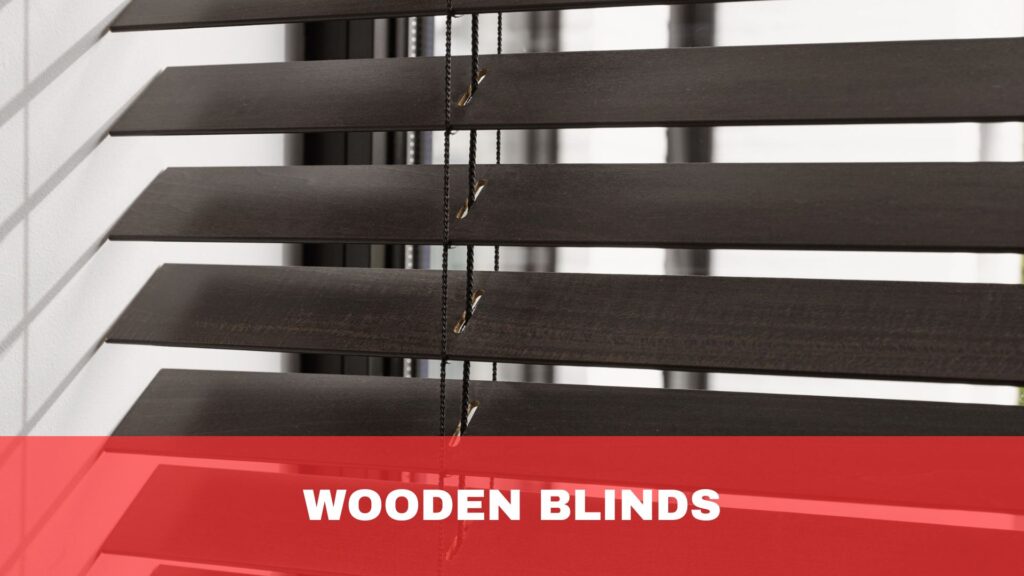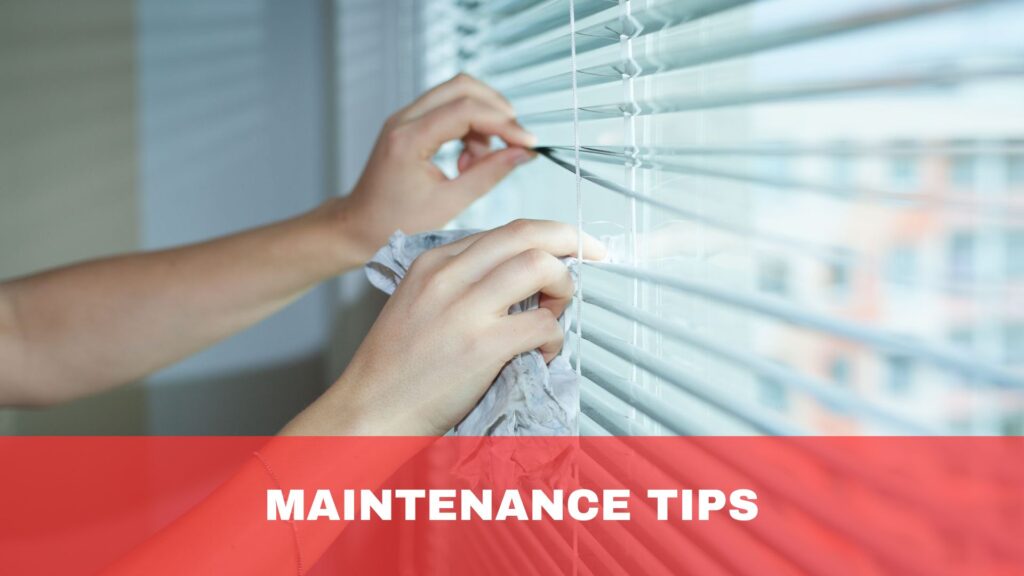Keeping window treatments clean can be challenging, leading to dust build-up and loss of aesthetic appeal. Without proper maintenance, curtains, blinds, and shutters can harbour allergens and become unsightly.
Discover effective cleaning techniques tailored to different window treatments to maintain freshness and prolong their lifespan.
What Are the Best Ways to Clean Different Types of Window Treatments?
The best ways to clean different types of window treatments vary. Machine-washable fabrics can be laundered for curtains and drapes, while non-machine-washable ones require spot cleaning or professional services. Depending on their material, blinds benefit from dusting or gentle washing. Shutters need dusting and occasional polishing. Roller blinds should be vacuumed or wiped down with mild detergent for optimal cleanliness.
Cleaning Curtains and Drapes
Cleaning curtains and drapes is essential to maintain their appearance and prolong their lifespan. Here’s how to clean them effectively:
1. Machine-Washable Fabrics

Cleaning non-machine-washable fabrics requires careful handling to preserve their delicate textures and colours.
Start by removing any hooks or hardware, then check the care label for specific washing instructions, including recommended water temperature and cycle settings. Use a gentle detergent to maintain the fabric’s colour and texture, avoiding bleach or fabric softeners.
Avoid overloading the machine when washing, and choose a delicate or hand-wash cycle with a low-speed spin to minimize creasing. After washing, promptly remove the curtains to prevent wrinkles, and either air dry them away from direct sunlight or tumble dry on a low heat setting, ensuring they do not overdry.
Once dry, gently iron on a low heat setting if needed, with the fabric slightly damp for easier crease removal.
2. Non-Machine-Washable Fabrics

Cleaning non-machine-washable fabrics requires careful attention to preserve their delicate textures and colours:
Start by dusting or vacuuming the curtains using a brush attachment to remove surface dust and debris. This step prevents particles from embedding more profoundly into the fabric during cleaning.
For spot cleaning, prepare a mild detergent solution diluted in lukewarm water. Test the solution on a small, inconspicuous curtain area to ensure it doesn’t cause damage or discolouration. If the test is successful, lightly dab the stained area with a clean cloth soaked in the detergent solution. Avoid scrubbing vigorously to prevent damaging the fabric fibres.
After spot cleaning, rinse the area with clean water using a damp cloth to remove any residue. Blot gently with a dry cloth or towel to absorb excess moisture, and allow the curtain to air dry completely.
Consider professional dry cleaning services for curtains made from delicate materials like silk or velvet. Dry cleaning ensures thorough cleaning without risking shrinkage or colour fading.
Regular maintenance, such as weekly dusting and prompt stain removal, helps maintain the cleanliness and appearance of non-machine-washable curtains, extending their lifespan and preserving their aesthetic appeal.
Cleaning Blinds
Cleaning blinds is essential to maintain their appearance and functionality. Here’s how to effectively clean different types of blinds:
1. Venetian Blinds

Dust with a feather duster or microfiber cloth to remove loose dust and debris. For a deeper clean, prepare a mild detergent solution in warm water. Dip a cloth into the solution, wring excess water, and gently wipe each slat from top to bottom. Rinse the cloth frequently to prevent dirt from spreading across the blinds.
2. Vertical Blinds
Use a vacuum cleaner with a brush attachment to effectively remove dust from vertical blinds. Spot clean with a sponge dipped in a mild detergent solution for fabric slats. Gently dab at stains and avoid excessive moisture to prevent damage. Vinyl or aluminium slats can be wiped down with a damp cloth and mild detergent, ensuring thorough drying afterwards.
3. Wooden Blinds

Regular dusting with a feather duster or soft cloth is crucial for wooden blinds to prevent dust buildup. Avoid using water, as it can warp or damage the wood. Instead, use a wood cleaner or polish designed for blinds to maintain their natural shine and protect the wood from drying out.
4. Faux Wood Blinds

Clean faux wood blinds are similar to wooden blinds, starting with dusting using a feather duster or cloth. Use a damp cloth with mild detergent for stubborn dirt, ensuring not to oversaturate. Thoroughly dry the blinds afterwards to prevent warping or water damage.
Cleaning Shutters
Cleaning shutters effectively helps maintain their appeal and functionality. Here’s a detailed guide on how to clean different types of shutters:
1. Wooden Shutters
Begin by dusting the shutters using a soft cloth or feather duster to remove surface dust and debris. For more stubborn dirt, lightly dampen the cloth with water or a wood cleaner suitable for shutters. Avoid using excessive moisture to prevent warping or damage to the wood. Polish the shutters occasionally with a wood polish to restore their natural shine and protect the wood from drying out.
2. Vinyl and Composite Shutters
Clean vinyl or composite shutters by dusting them with a soft cloth or using a vacuum cleaner with a brush attachment to remove dust. Wipe the shutters with a damp cloth and mild detergent for deeper cleaning. Avoid using harsh chemicals that can damage the material. Rinse with clean water and dry thoroughly to prevent water spots or streaks.
Cleaning Roller Blinds
Cleaning roller blinds is straightforward with the right approach to maintain their cleanliness and functionality:
1. Fabric Roller Blinds
Dust the blinds using a feather duster or a soft cloth to remove loose dust and debris. This initial step prevents dirt from embedding more deeply into the fabric during cleaning. For a more thorough clean, use a vacuum cleaner with a brush attachment to gently vacuum the blinds, paying attention to the folds and edges where dust tends to accumulate.
For spot cleaning, prepare a mild detergent solution diluted in lukewarm water. Test the solution on a small, inconspicuous area of the blinds to ensure it doesn’t cause discolouration. If the test is successful, lightly dampen a clean cloth in the solution and gently blot the stained area. Avoid rubbing vigorously to prevent damaging the fabric.
After spot cleaning, rinse the cloth with clean water and blot the area again to remove any remaining detergent residue. Allow the blinds to air dry completely before rolling them back up.
2. Vinyl Roller Blinds
Due to their smooth, non-porous surface, vinyl roller blinds are more straightforward to clean. Using a mild detergent solution, wipe the blinds down with a damp cloth. This helps remove dust, dirt, and light stains.
Avoid using abrasive cleaners or harsh chemicals that could damage the vinyl. After cleaning, rinse the blinds with clean water to remove any detergent residue. Use a dry cloth to dry them thoroughly to prevent water spots or streaks.
Specialised Cleaning Tips
Specialised cleaning tips ensure thorough maintenance of various window treatments, addressing specific challenges effectively:
- Dealing with Mould and Mildew: Prevent mould and mildew by keeping humidity levels low and ensuring adequate ventilation around window treatments. If mould develops, tackle it promptly with vinegar and water or a commercial mould remover solution. Apply the solution gently, allow it to sit for a few minutes, and then wipe clean. Ensure the treated area is completely dry to prevent regrowth.
- Removing Pet Hair and Dander: Combat pet hair and dander by regularly vacuuming curtains and blinds using a vacuum cleaner with a pet-specific fabric attachment. Use a lint roller or a soft brush attachment for fabric treatments to remove pet hair effectively. Washable window treatments should be laundered with a pet-specific detergent to eliminate allergens thoroughly.
- Preventing Sun Damage: Protect window treatments from sun damage using UV-protective sprays or applying window films. These products help minimise fading and prolong the lifespan of curtains, blinds, and shutters exposed to direct sunlight.
- Handling Specialty Materials: For window treatments made from speciality materials like delicate silks or intricate lace, consult professional cleaners or follow the manufacturer’s guidelines for safe cleaning methods. Special care ensures these materials retain their beauty and integrity over time.
Maintenance Tips for Prolonged Cleanliness

Maintaining prolonged cleanliness of window treatments involves consistent care and preventive measures:
- Regular Dusting and Vacuuming: Schedule weekly dusting using a feather duster or a soft cloth to prevent dust buildup on curtains, blinds, and shutters. Use a vacuum cleaner with a brush attachment to reach deeper into fabric folds and blind slats for thorough cleaning.
- Immediate Stain Removal: Promptly treat stains and spills on window treatments to prevent them from setting. Use a gentle blotting motion with a clean cloth and a mild detergent solution suitable for the material. Test any cleaning solution on a small, inconspicuous area first to ensure it won’t damage or discolour the fabric.
- Periodic Deep Cleaning: Plan for periodic deep cleaning based on the type of window treatment. Machine-washable curtains should be laundered according to care instructions. Non-washable fabrics and blinds may require professional cleaning services to maintain integrity and appearance.
- Sun Protection: Use UV-protective sprays or install window films to protect window treatments from sun damage. These measures help prevent fading and extend the lifespan of curtains, blinds, and shutters exposed to direct sunlight.
- Maintenance of Hardware: Regularly inspect and clean curtain rods, blind mechanisms, and shutter hinges to ensure smooth operation and longevity. Wipe down metal hardware with a damp cloth and check for any signs of rust or wear that may affect functionality.
- Seasonal Inspections: Perform seasonal checks on window treatments to address any wear and tear, especially after periods of heavy use or weather exposure. Repair or replace damaged components promptly to prevent further deterioration.
Conclusion
Maintaining clean window treatments enhances both aesthetics and longevity. Regular dusting, prompt stain removal, and occasional deep cleaning are essential. Protect against sun damage and ensure hardware upkeep for optimal performance.
For expert advice and quality treatments, explore our range at Into Blinds and elevate your home’s appeal today.


